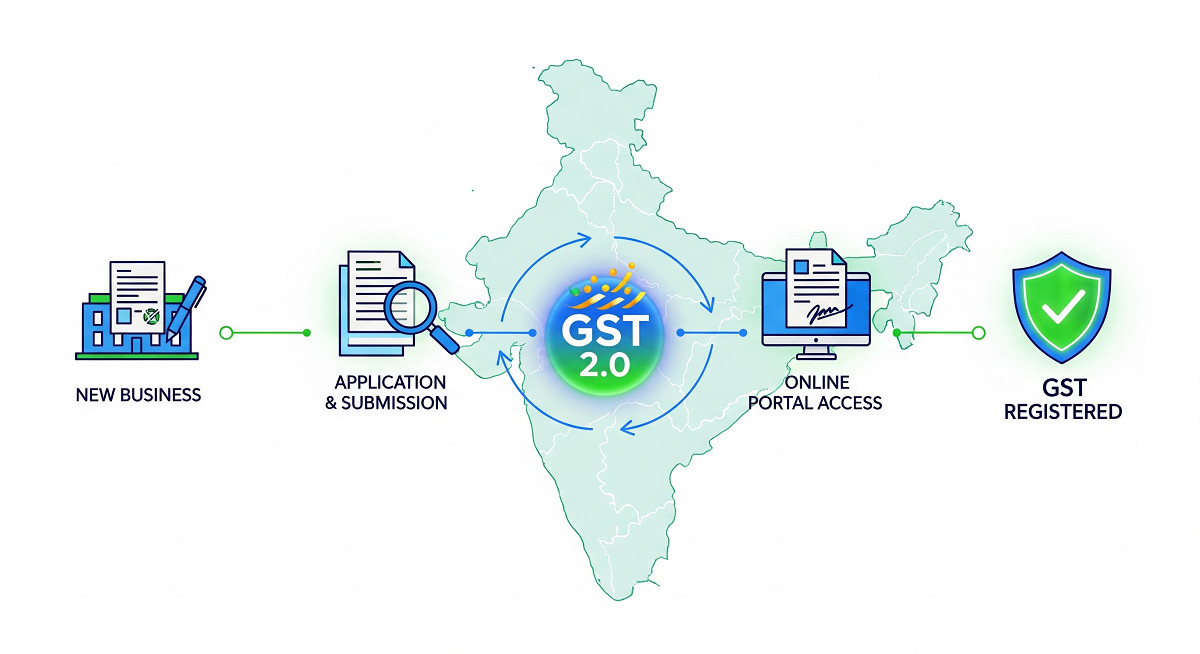India’s GST Council has recently introduced major reforms that simplify the GST registration process for new businesses under the GST 2.0 regime. New guidelines allow eligible non-risky applicants to complete GST registration in just three days, a significant improvement from previous timelines and a boon to ease of doing business.
Background: GST 2.0 and Process Reforms
“Next-generation” GST reforms, branded as GST 2.0, aim to streamline compliance across the board by simplifying the rate structure and administrative processes. Among these, the revamped GST registration process stands out—designed to reduce procedural delays, enhance transparency, and support small and medium businesses.
Understanding GST on Cars in India: Rates, Rules, and Updates
Step-by-Step: GST 2.0 Registration Process
1. Document Preparation
Before beginning the online process, businesses must gather essential documents:
- PAN of the business
- Business proof (e.g., incorporation certificate or partnership deed)
- Address proof of principal place (e.g., electricity bill, rent agreement)
- Identity and address of promoters or authorized signatory (Aadhaar, PAN, photograph)
- Bank details (cancelled cheque or bank statement)
2. Part A: Initiate on GST Portal
Visit gst.gov.in → Services → Registration → New Registration
Enter details:
- Type of taxpayer
- State, district, business name, PAN, email, mobile
- Receive OTP(s), validate, and obtain a Temporary Reference Number (TRN)
3. Part B: Complete Application
Log in using TRN and OTP to fill in:
- Business nature and jurisdiction
- Promoter and authorized signatory details with Aadhaar authentication
- Principal place of business, geotagged address, and bank information
- Upload required documents in the specified format
4. Submit via E-Sign or DSC
- Use Aadhaar OTP (for individuals) or Digital Signature Certificate (DSC) (for companies) to authenticate and submit the application.
5. GSTIN Approval
If everything is in order:
- GSTIN (registration number) is usually granted within three working days for non-risky applicants.
- You may receive queries (Form GST REG-03); timely replies help avoid delays.
- Once approved, download the GST Registration Certificate
Expert Outlook on the Reform
CBIC Chairman Sanjay Kumar Agarwal called the broader GST reforms transformational, promising enhanced tax certainty and a predictable environment for businesses. Finance Minister Nirmala Sitharaman termed GST 2.0 the culmination of India’s indirect tax overhaul, emphasizing its role in promoting affordability and compliance.
Significance for Businesses
- Rapid Registration: Cut-down from weeks to three days accelerates market entry.
- Greater Ease of Doing Business: Clearer steps and automation reduce the administrative burden.
- Improved Compliance: Prefilled returns and auto refunds (rolling out by October) support smoother operations.
- Support for MSMEs and E-commerce Sellers: Simplified procedures help small and interstate sellers scale faster.
FAQs
A1: Non-risky applicants can receive GSTIN within three working days, a significant improvement under GST 2.0.
A2: You need business PAN, business registration proof, address proof, promoter identity, and bank statement or cheque.
A3: Visit gst.gov.in → Services → Registration, complete Part A (get TRN), fill Part B, upload documents, and submit via Aadhaar OTP or DSC.
By adopting the streamlined GST 2.0 registration process, new businesses can quickly secure compliance, kickstart operations, and benefit from India’s simplified tax regime.









